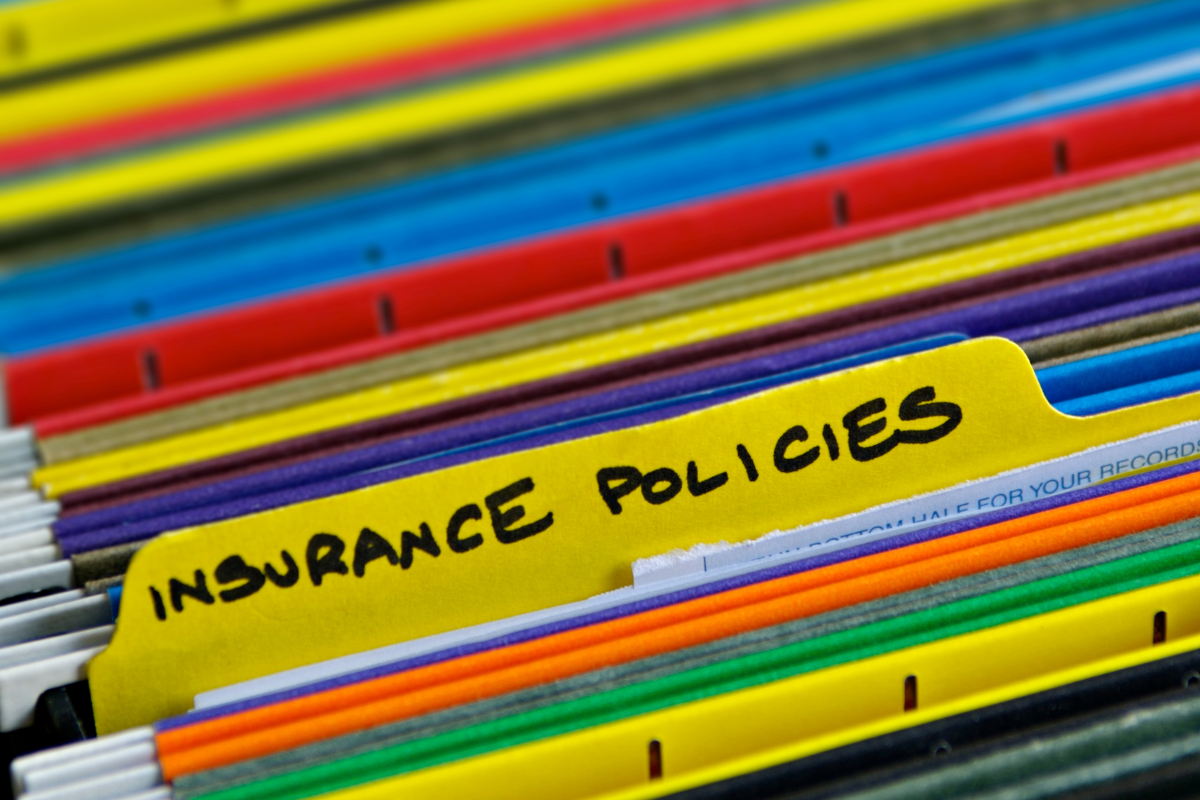Post Disclaimer: This blog reflects the author's personal experience with end-of-life matters and is provided in good faith for informational purposes only. While we aim to provide clear guidance on hard-to-find topics, this content is not legal advice and your use is at your own risk. Estate planning and end-of-life laws vary by location, so please consult your state's laws and seek guidance from a licensed attorney for your specific situation. We make no warranty about the accuracy or completeness of this information, which does not replace professional legal counsel. For more information, please see our full disclaimer.
Dealing with the passing of a loved one is emotionally draining.
However, organizing their essential estate documents is a necessary step to ensure legal compliance and practical management of their estate.
Creating an organized system can seem overwhelming at first, yet it's crucial for a smooth transition and can even offer a sense of closure.
This guide will walk you through the process, empowering you with the knowledge and skills needed to manage executor's legal responsibilities effectively.
From understanding the significance of letters of testamentary to tackling immediate tasks with a checklist, you'll learn how to streamline these tasks with empathy and precision.

Before You Begin
Prior to getting started with the painstaking task of organizing estate documents after the passing of a loved one, it's crucial to establish a clear plan.
While emotions may run high, having a structured approach can help alleviate some of the stress involved.
In this section, we explore the necessity of assembling the right tools and optimizing your workspace to effectively manage these important tasks.
By laying the groundwork, you'll ensure that the process is more manageable and less overwhelming.
Gathering Supplies
Before diving into the document sorting process, ensure you have the right supplies at hand.
Just like a builder preps with tools specific for a job, organizing estate documents requires its own set of essentials.
Consider gathering:
- Document Storage Boxes: Opt for sturdy, waterproof, and stackable boxes to ensure documents remain intact and protected.
- File Folders: Color-coded or labeled folders can help in categorizing items such as financial records, legal documents, or personal items.
- Secure Storage Location: Identify a safe place to store your completed document system, which might include a fireproof safe or a safety deposit box.
By preparing these items in advance, you'll have a simple yet effective system to progress with ease.
For more insights on document organization essentials, consider reading this Checklist of Important Papers to Gather Following the Death of a Loved One.
Creating a Workspace
A well-organized workspace can significantly enhance your efficiency in managing estate documents.
Think of this space as your personal "command center" where you can navigate through paperwork.
Here are some effective tips to create an optimal environment:
- Choose a Quiet, Undisturbed Area: An area free from distractions will allow you to focus on the task at hand, making it easier to sort through sensitive and confidential documents.
- Ample Surface Area: Ensure there's enough space to spread out documents, so you can group and categorize effectively without feeling cramped.
- Utilize Technology: Consider using a scanner to create digital copies, which not only backs up the data but also makes sharing with other family members effortless.
Setting up your workspace thoughtfully is akin to arranging tools before building a structure; it’s about creating the perfect setting for methodical work.
For those considering building an "in case of death binder" to streamline this process further, How to Build an 'In Case of Death Binder' provides detailed guidance.
By following these steps, you'll be well on your way to organizing estate documents with both precision and empathy, bearing in mind that the end goal is to cultivate clarity and peace from paperwork amidst the chaos of loss.

Initial Document Assessment
When a loved one passes, the whirlwind of emotions can make the daunting task of organizing their important documents even more overwhelming.
However, taking the time to assess and manage these documents methodically can pave the way for a smoother administrative process during such a challenging time.
This section focuses on identifying the crucial documents and understanding their urgency, allowing you to streamline tasks effectively.
Essential Documents to Locate First
In the initial stages of document assessment, it’s important to prioritize key documents.
These foundational papers provide a basis for all subsequent legal and financial responsibilities that may arise.
Consider starting with the following:
- Death Certificate: This critical document is needed for funeral arrangements, closing financial accounts, and claiming insurance benefits. Multiple certified copies may be necessary.
- Will: Locating the will is crucial. It outlines the deceased's wishes concerning the distribution of their assets and can guide executors in fulfilling their legal duties.
- Insurance Policies: Understanding the coverage, beneficiaries, and terms are necessary to facilitate claims processing and ensure that entitled individuals receive benefits efficiently.
Taking these initial steps can significantly reduce the burden and confusion during this difficult period.
For comprehensive insights into maintaining these documents effectively, explore Documents and information needed when someone dies.
Immediate Action Documents
Amidst the emotional upheaval, there are certain documents that require immediate attention to avoid unnecessary complications.
Addressing these promptly can prevent further stress:
- Current Bills: Identify outstanding bills, such as utilities and loans, which need immediate payment to avoid lapses in service or accruing late fees.
- Healthcare Information: Secure any medical records or healthcare directives that might be relevant for closing accounts or addressing any ongoing health obligations.
In situations where timely action is essential, having a predefined checklist can be invaluable.
You may find it helpful to refer to resources such as After a Death Occurs: A Checklist for detailed guidance on immediate steps.
By staying organized and focused, you can transform this arduous task into a manageable process, ensuring that the estate's affairs are settled with respect and efficiency.
For further assistance in managing these responsibilities, consider reviewing how to report a death to Social Security, as it may intersect with handling survivors' benefits.

Organization System
In the aftermath of a loved one's passing, managing their documents is not just a task—it's a responsibility.
It's about ensuring their legacy is preserved correctly, their wishes are respected, and future confusion is avoided.
Creating a structured organization system for these documents can be transformative, turning chaos into clarity.
Category-Based Filing System
Organizing important documents begins with categorization.
Structuring files based on categories makes retrieval convenient and reduces the emotional burden of constantly sifting through paperwork.
Consider using the following categories for your filing system:
- Legal Documents: Include wills, trusts, powers of attorney, and any legal contracts. These are critical for handling estate matters and should be easily accessible.
- Financial Records: Gather bank statements, investment portfolios, tax-related documents, and loan agreements. Understanding and managing financial obligations becomes straightforward with this setup.
- Insurance Papers: Life, health, home, and auto insurance documents should be grouped here. This will ensure that claims and benefits can be processed without delay.
- Personal Records: This includes birth certificates, marriage certificates, social security details, and personal identification documents. These help in verifying identity and handling personal affairs.
- Property Records: Deeds, titles, lease agreements, and related property papers fall into this category. It simplifies property management and potential transactions.
Establishing such a category-based system not only streamlines your search efforts but also provides peace of mind knowing everything’s in its rightful place.
Digital Organization
While physical categories lay a solid foundation, technology can further ease the complex task of organization.
Creating a digital filing system is pivotal for ensuring documents remain accessible and safe from physical damage.
Here's why it matters and how you can achieve it:
- Scanning Documents: Transform paper documents into digital files by scanning them. This not only creates a reliable backup but also allows easy sharing with other family members or legal advisors.
- Utilizing Cloud Storage: Leverage cloud services for storing scanned documents securely and accessing them from anywhere, ensuring that you're never without essential information at crucial times.
- Organizing Digital Folders: Just as with physical files, categorize digital documents with clear folder names and consistent file naming conventions. This replication in digital form bridges the gap between physical and digital management.
By embracing digital solutions, you create a resilient system that's as adaptable as it is reliable, mitigating risks like fire or water damage to physical copies.
If planning to integrate this with a physical system, consider reading further into creating an effective "In Case of Death Binder".
Remember, the aim is to honor your loved one by managing their affairs responsibly, ensuring no stone is left unturned in the pursuit of order and respect.

Processing Documents
Handling the affairs of a deceased loved one is a task no one is prepared for.
Processing their documents can feel like deciphering a complex puzzle with pieces scattered around, requiring you to exercise both tact and efficiency.
By understanding where to begin, you'll navigate this path with greater ease and assurance.
Sorting Process
The initial sorting of documents is fundamental to creating an organized system.
Think of it as laying the groundwork for a house you're about to build.
Begin by gathering all available paperwork and then categorize them with precision:
- Legal Documents: These include wills, trusts, and powers of attorney. These papers are your roadmap, guiding you on legal obligations and the deceased's final wishes.
- Financial Records: Pay attention to bank statements, investment papers, and tax filings. Categorizing these helps you manage financial affairs with accuracy.
- Personal Papers: Birth certificates, marriage licenses, and identification should be sorted separately. These documents are vital for verifying identity and executing legal tasks.
While the task might seem daunting, breaking it into smaller, manageable steps can ease the process.
For more guidance, see the article on What documents do you need after a loved one dies.
Important Actions
Beyond sorting, certain actions demand immediate attention.
These early steps can prevent unnecessary difficulties and ensure services are managed correctly.
Here are some key actions:
- Notify Relevant Institutions: Inform banks, insurance companies, and government bodies about the death. Each organization will require specific documents, usually including the death certificate.
- Cancel or Transfer Services: Address utilities, subscriptions, and memberships. This might involve canceling services or transferring them to another family member.
- Financial Accounts: Settle any existing debts and ensure that automatic payments are managed accurately to avoid extra charges.
These actions are crucial to maintaining order and fulfilling responsibilities efficiently.
You can find more in-depth guidance on actions to take with Agencies to notify when someone dies.
In processing your loved one's documents, each step you take not only honors their memory but also strengthens the ties of family and community by ensuring that their affairs are conducted with care and respect.

Wrap-up: Organizing Estate Documents
Dealing with the passing of a loved one comes with a unique blend of emotional and practical challenges.
Organizing their important documents is more than just an administrative task—it's an act of love and responsibility.
As we explore the nuances of creating an organized system, remember that this process is not only about efficiency but also about respecting their legacy and ensuring their wishes are honored.
Revisiting Document Organization Strategies
To effectively handle estate documents, it's crucial to revisit the strategies of both physical and digital organization.
Whether you're setting up a category-based filing system or diving into digital solutions like constructing a death binder, each step ensures the respectful and seamless management of your loved one's affairs.
- Start with clearly labeled folders for different categories. Simple divisions such as financial records, legal documents, and personal papers can drastically simplify retrieval and management.
- If you opt for a digital route, make sure to maintain consistent naming conventions and secure your files on a reliable cloud service for accessibility and safety.
Understanding these strategies not only brings order but also peace of mind, knowing all affairs are adequately handled.
Balancing Immediate Needs with Long-term Planning
As daunting as it seems, this process requires balancing immediate administrative needs with thoughtful, long-term planning.
Here are some steps you might consider:
- Immediate Notifications: Contact necessary institutions to report the death. This list can include banks, insurance companies, and relevant governmental bodies.
- Manage Debts and Finances: Settle outstanding debts and financial obligations, keeping track of automatic transactions to avoid unwarranted charges.
- Continue Legacy: Consider setting up funds or plans that reflect the deceased's values and wishes, providing a living testament to their impact.
These steps provide essential guidance on managing the procedural aspects while giving time and space to grieve and remember.
Where to Find More Help
If you're looking for more personalized help or guidance, there are myriad resources available.
The checklist offered by the National Institute on Aging provides valuable insights into preparing for the future, while professional services can offer a helping hand in carrying out these responsibilities with empathy and efficacy.
Each document you organize and task you complete adds a piece to the puzzle of moving forward while honoring the past.
By maintaining clear and empathetic communication with family members and professionals, you ensure that your loved one's legacy is both protected and celebrated.

Appendix: Organizing Estate Documents
In the journey of managing estate documents, establishing a reliable support system is invaluable.
Your task may be overwhelming, but having the right tools can make a tremendous difference.
In this section, we provide helpful templates and checklists along with a resource list tailored for navigating the aftermath of a loved one’s death with greater ease and confidence.
Templates and Checklists
Building an organizational system from scratch can feel like wandering in the dark.
However, using templates and checklists can light the way, ensuring you don't miss critical steps.
Here are some practical tools to guide your process:
- Document Inventory Sheet: This sheet helps catalog every document you come across - from financial records to personal papers. Having a comprehensive inventory ensures nothing is overlooked.
- Contact List Template: During such challenging times, communication is key. A contact list template lets you keep track of important contacts, including financial advisors, legal representatives, and family members.
- 'In Case of Death' Binder: Consider developing an ‘In Case of Death Binder’ to keep all documents and critical information in one place. This organized collection can be a lifesaver in reducing stress and maintaining order.
For additional guidance, the Estate Planning Organizer Download offers tools that are designed to help in organizing planning documents effortlessly.
Resource List
Having access to the right resources can provide clarity and direction, transforming confusion into understanding.
Here’s a carefully curated list of resources to consider:
- Legal Resources: Websites like Free Estate Planning Checklist offer free planning templates and checklists. These resources simplify complex legal obligations, making your task much more straightforward.
- Government Agencies: Engage with agencies like Social Security Administration for matters concerning debt reporting and benefit claims, which you might find within our guide on reporting a death to Social Security.
- Support Groups: Joining support networks can offer emotional relief and practical advice. Look for community forums or local support groups that specialize in helping individuals manage estate responsibilities.
- Professional Services: Consider connecting with financial advisors or estate planning attorneys to ensure your actions align with your loved one’s wishes. Their expertise can alleviate some pressure by providing clarity and guidance on complex issues.
Inclusion of these templates, checklists, and resources can significantly ease the process of estate document management, ensuring that you're steps ahead in fitting all the puzzle pieces together seamlessly.
Taking advantage of these tools can not only provide peace of mind but also ensure you honor your loved one's legacy in the best way possible.
Find a Probate Lawyer Near You
Check out the Up & Doing glossary page for an alphabetical listing of key terms related to estate administration, funeral planning, and other end-of-life topics.




